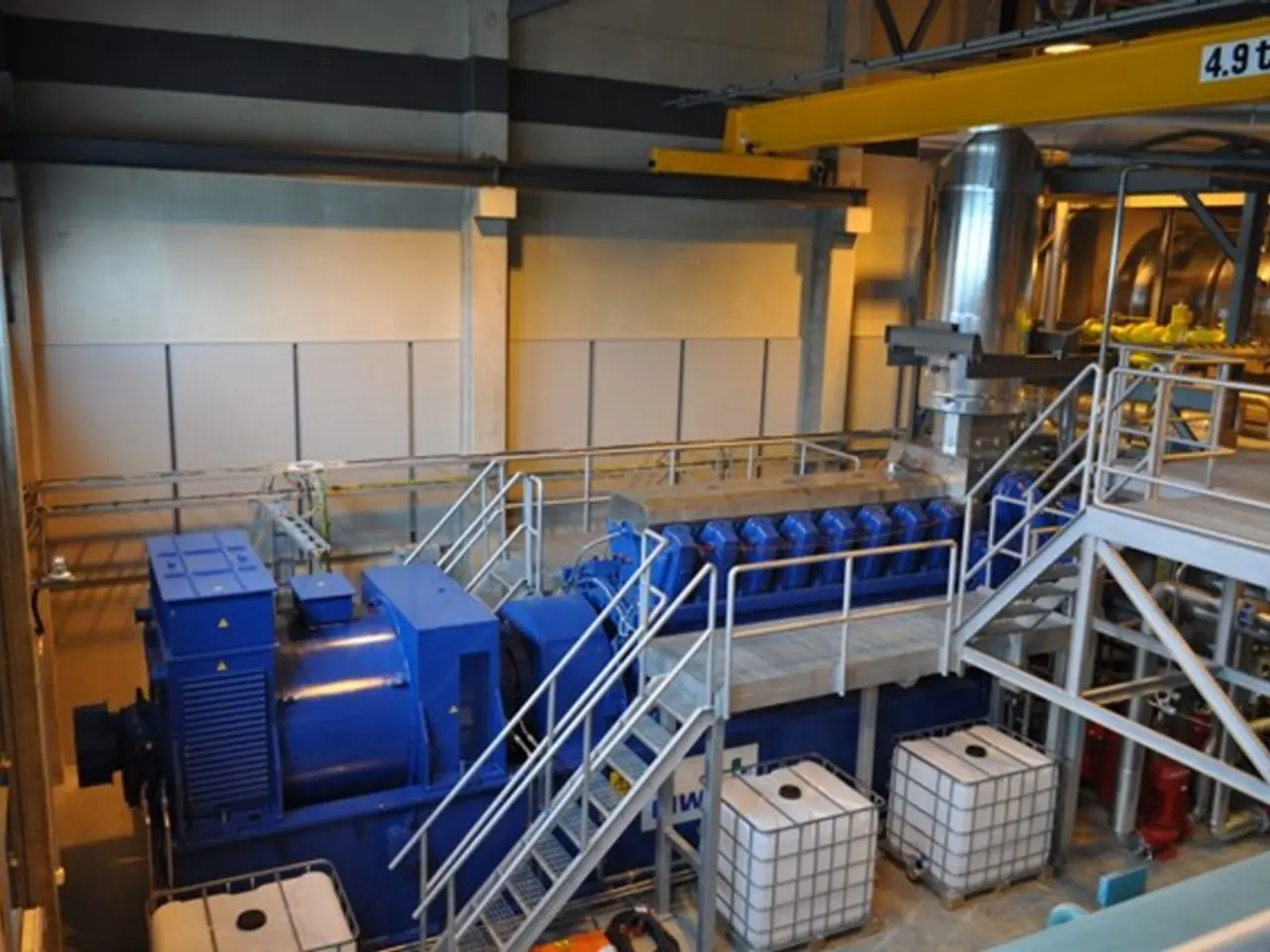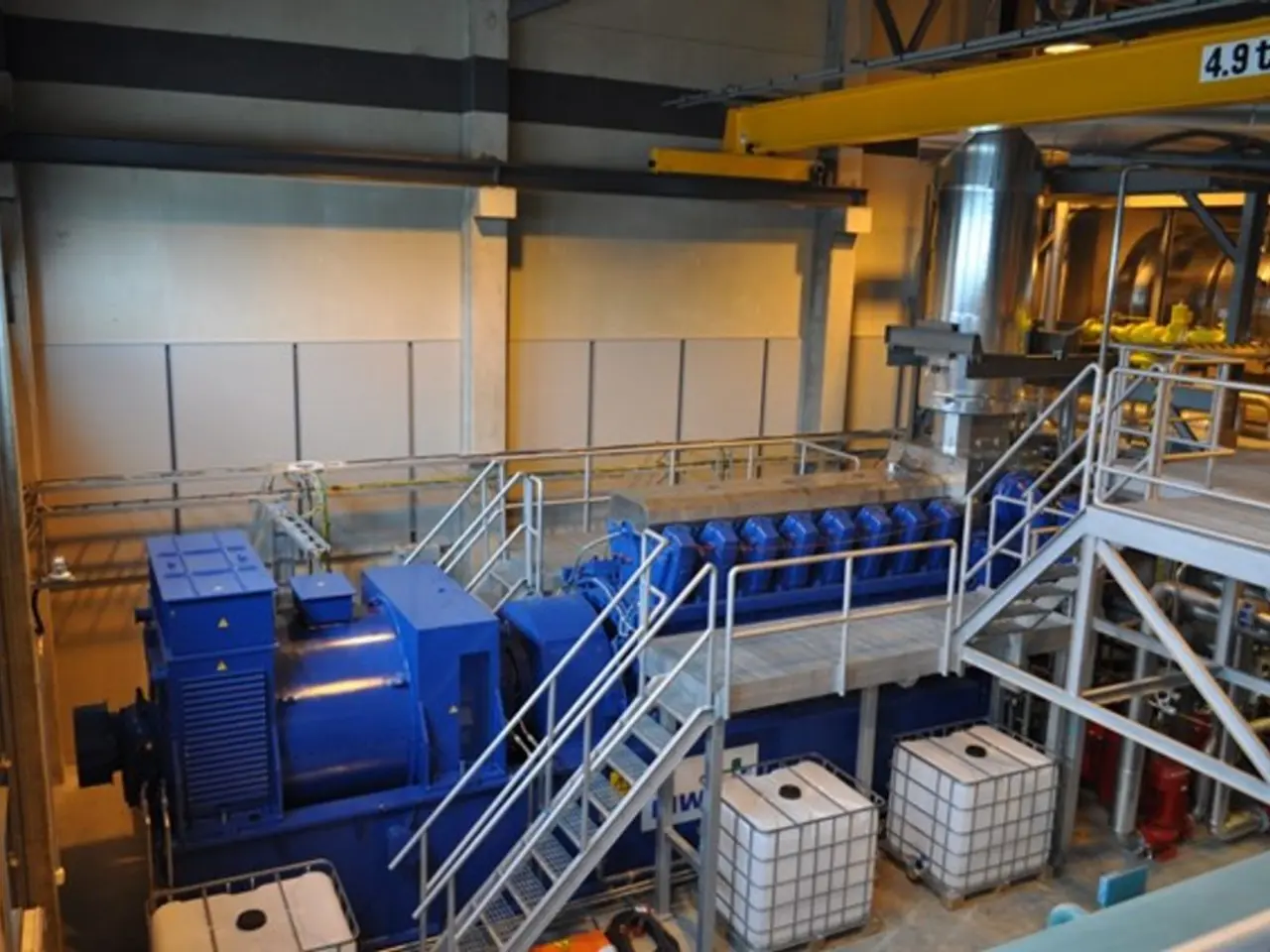Solar Power Venture in Space: Possible Largest Energy Endeavor Ever Attempted by China?
China is embarking on a groundbreaking initiative to develop a 1-kilometer-wide solar power array in geostationary orbit, approximately 36,000 km above Earth [1]. This ambitious project, with a scale comparable to moving the Three Gorges Dam into space, signifies China's determination to lead in the new frontier of energy exploitation.
The solar power station, if successful, will generate up to 100 billion kWh annually, matching the electricity output of the Three Gorges Dam. This monumental space-based energy project promises continuous, uninterrupted power generation, offering roughly 10 times the efficiency of terrestrial photovoltaic systems due to its location beyond weather and night cycles [1].
Key features of this project include the conversion of collected solar energy into microwaves and wireless transmission to Earth-based receiving stations, establishing a "space power grid" concept. The project is deemed significant by lead Chinese scientist Long Lehao of the Chinese Academy of Engineering, who compares it to moving the Three Gorges Dam to geostationary orbit [1].
To deploy this massive solar array, China plans to use its Long March-9 super-heavy launch vehicle, capable of delivering payloads over 150 metric tons to orbit [1].
This space solar station fits into China's broader strategic emphasis on pushing boundaries in energy infrastructure and space technology. It complements China's other ambitious space projects, such as the International Lunar Research Station and crewed lunar landings planned by 2030, suggesting continued investment in space-based technology to support energy security and geopolitical objectives [2][4].
The colossal initiative could offer a new source of clean and inexhaustible power for the world, potentially revolutionizing the way we think about and utilize solar power. The implications of this development could be global, offering new possibilities for sustainable development on a planetary scale.
The success of this project could secure China's energy needs and provide a new source of clean and inexhaustible power for the world. The project showcases China's grand ambition to lead in energy innovation, drawing inspiration from past successes to push the boundaries of what is possible in renewable energy.
[1] Xinhua. (2021, March 5). China plans to build solar power station in space. Retrieved from https://www.xinhuanet.com/english/2021-03/05/c_139514852.htm
[2] Science and Technology Daily. (2021, March 5). China's space solar power station: A new chapter in space exploration. Retrieved from http://www.sciencenet.cn/ARTS/2021/202103/120210305_175258.shtml
[4] China Daily. (2021, March 5). China's space solar power station ambitions. Retrieved from http://www.chinadaily.com.cn/a/202103/05/WS603e4663a310d9a614387658.html
- The innovation of a space solar power station, as envisioned by China, could revolutionize the way we think about and utilize solar power.
- This ambitious space project, reminiscent of moving the Three Gorges Dam to geostationary orbit, underscores China's determination to lead in scientific advancements and technology.
- The project, if successful, could provide a significant source of clean and inexhaustible energy for the world, catapulting environmental-science and finance industries towards sustainability.
- The 1-kilometer-wide solar power array, which generates up to 100 billion kWh annually, promises efficiency beyond terrestrial photovoltaic systems, due to its location in space.
- To bring this innovation to fruition, China plans to leverage its Long March-9 super-heavy launch vehicle, a testament to its commitment to space-and-astronomy and the pursuit of technological breakthroughs.




